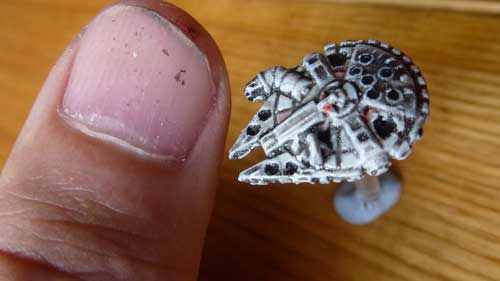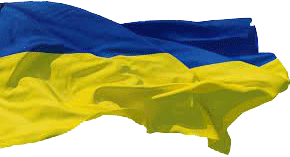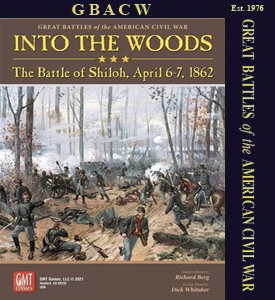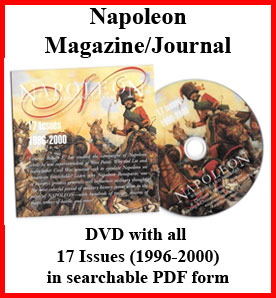September 2017
An eventful August, wargaming wise, for me. Excitement came in the form of Waning Crescent, Shattered Cross making its pre-order numbers - my thanks to all that have supported me in this venture - either by placing a pre-order or in the playtesting and development. The latter continues as we get it production-ready.
More pre-orders are always welcome though (and, remember, there's no payment is requested until the game is ready to ship) and so I thought I'd post the summary of the game, below, that I was invited to provide on CSW by a fellow Legion designer (hopefully it will generate some additional interest - and orders).
But, before that, some exciting Septemeber news - we have a new sponsor!!!
Most gamers are familiar with Mitchell and Creasy's classic of military history, Twenty Decisive Battles of the World. TPS are producing games covering all 20 of those battles.
The people who bring you Against the Odds Magazine launched a sister company, Turning Point Simulations, to create a new sort of gaming experience...classy, rather small, boxed, mounted boards or quality playing cards...all games with low complexity but high challenge and play value.
All 20 of the book's battles, from Marathon to Stalingrad will be included. Published at the rate of 4 per year. Available individually, or choose the entire series for a remarkable single price.
To date, 16 of the 20 battles have games available.
Waning Crescent, Shattered Cross
OK, now that promised overview of the game
Waning Crescent, Shattered Cross (WCSC) covers the 1565 Great Siege of Malta of which "Nothing is better known”, according to no less than Voltaire.
Well, that may well have been the case in the18th Century but I for one had never heard of it – until, that is, I read ‘The Religion by Tim Willocks. This is a real ripping yarn of derring-do. Fun to read but clearly outrageous fiction – or is it? Read any historical account of the siege and you’ll soon find the tales of valour, cruelty and miraculous events that form the background to Tanhauser’s adventures are firmly set in reality. The siege is clearly a prime candidate for a Hollywood blockbuster.
Well, I’m no film maker (perhaps I should talk to Lance Steen Anthony Nielsen) but I could at least see whether I could design a game on the topic. There’s actually one already out there already, Knights of Justice (from the wargamer magazine), which appears fairly ‘traditional’ as wargames go. My game was going to use cards to generate a narrative that would hopefully capture some of the ‘boys own’ adventure that was The Great Siege of 1565. So, over two years from first being inspired to have a go at creating the game, what have we got?
WCSC is a one map, point-to-point, CDG. The Christians’ initial forces are limited in number and that player’s first decision is how to distribute this men to cover the five fortified areas available to him – St Elmo, Mdina, Senglea and Birgu/St Angelo. Some of the fortifications’ preparations are incomplete and so a random distribution of ‘breaches’ will represent this. The Christians have a mix of Maltese peasants, men at arms/mercenaries, sergeants and Knights of St John.
The Ottoman player has the luxury of having the entirety of his massive force of levies, Ialyars, Spahis and janissaries, available to him/her. This starts encamped on the Marsa and that player’s first decision is where to focus their opening attack – and where to feint. There are three (randomly selected) strategies available to the Ottoman player: focus on Mdina, St Elmo (historical) or St Angelo. The Christians won’t know the Ottoman strategy and the Ottoman player is not obliged to follow it (though there are penalties if they don’t).
Each player starts with a hand of eight cards. The Ottoman opens by playing a card or selecting one or more additional cards from the main deck. Once a card is played, no further cards can be drawn that ‘phase’. The secret is to get the balance right between drawing the number of cards you want/need and avoiding drawing a ‘Week Ends’ card (there are several distributed amongst the deck). Having drawn any additional cards, and assuming the week does not end, the Ottoman plays his cards. He has a range of options for which cards can be played including (but not limited to) using them to move a force from one point (or the Camp) to another or for their events. The events cover the many amazing occurrences of the campaign – but a card’s success often is often random. The player can play as many of their cards as they wish. Whilst it will often be tempting to exhaust one’s hand, it is advisable to keep one or two cards back to counter Christian activities during their play. Play now switched to the Christian player who draws additional cards if they wish to and then plays their hand. They also have the move or event options for card play, along with a range of other possible actions (e.g. Repair Breach), some of which are common with the Ottoman and some of which are different.
Play flip/fops between players in this way until the dreaded ‘Week Ends’ card is drawn. Whilst not good news for the Christian player if they draw this card, as it effectively gives the Ottoman a double-turn, the Ottomans will come to hate and dread this card as it robs them of their most valuable asset – time.
The end of the week will see various weekly processes invoked including assaults on Mdina, possible recovery of casualties (the Christians get the benefit of their hospital in Birgu), disease losses and the possible outbreak of plague, supply adjustments, etc. Combat is divided into ranged fire and melee. Outflanking is possible and the use of supporting forces is crucial. If you’re lucky you’ll achieve an overwhelming attack, if you’re an unlucky Ottoman player you may see your attacks stalling. And naval assaults are possible too.
Maltese and men-at-arms defend the walls of Senglea from Ottoman Spahis and Ialyars (Please note that the image is of playtest components).
The siege element sees the building of trenches, artillery cross-fire, mining (and counter-mining) breaching of walls (and their repair), scaling and intrinsic fire.
During play each side’s morale can go up and down and the Ottoman also neds to concern themselves with maintaining their honour. Eventually one of three events will trigger the end of the game: Ottomans will have taken specified objectives, long promised and eagerly awaited Christian reinforcements will arrive from Sicily, or the Ottomans will be obliged to withdraw from the island.
That’s it in a nutshell.
If the game is a big success, who knows, the statement “Nothing is better known than the siege of Malta” may ring true again – at least in wargaming circles.
Other News
What else happened in August? Well, I rediscovered minis wargaming.
Those of you that have found and read my bio on this site will know that I got unto the hobby 45 years ago as a consequence of fighting 'the battle of the half-coconut'. Minis were my life for the next 10 years with board wargames a fairly minor adjunct. When I got back into wargaming 15 years ago, it was boardgaming the main focus.
Then in July or August, somewhere (probably BGG during the unexpected absence of BGG), I read about Star Wars: Armada. Whilst not a massive Star Wars fan (the films are fun but I'm not addicted), something appealed and i bought the base kit at a good price off Ebay. Ian Metcalfe and i then played a game and enjoyed it. Whilst the base game is fun, it was pretty clear that adding just a few more ships would improve the experience considerably and so I bought 3 new capital ships and the 'Rogues and Villains' set of small ships (including the Millennium Falcon  ). The latter were crying out to be painted (the capital ships come (very well) pre-painted), so off I went to the local model shop to buy paints and brushes and off I went, using acrylics for the first time in my life and painted up the set along with the X-Wings and Tie fighters that come with the base set.
). The latter were crying out to be painted (the capital ships come (very well) pre-painted), so off I went to the local model shop to buy paints and brushes and off I went, using acrylics for the first time in my life and painted up the set along with the X-Wings and Tie fighters that come with the base set.

I was very pleased with my efforts (though my self-congratulations were considerably dampened when I Googled to see what others had done) and inspired to have a go at something more ambitious. My initial intention was to buy a 54mm figurine to paint - but the price and a realisation that I may well me disappointed in my initial efforts led me to discard that idea.
What I settled on, perhaps going from the sublime to the ridiculous, was to get and paint a 15mm Ancients army. These were large enough that I could try shading and highlighting, considerably cheaper than a 54mm figure (I could get an entire army for under £20), and i could try minis wargaming again.
Over the last week I've been lobbying my regular F2F gaming buddies to see if they would be interested too - and there more interest than I had anticipated. So, I have a Thessalian and a Phokian army on order - and already have the DBA v3.0 rules  .
.
Whilst I doubt mini-gaming will ever again assume the dominance in my life it had before, and whilst I suspect boardgaming will remain my main form of wargaming, I think the next few months will be fun.
OK. That will do for this month - that must be one of the longest Update Pages in the site's 14-year history. See you in October - enjoy the last of the Summer!
BREXIT & Our EU Friendly Shipping
Despite the UK vote to leave the European Union, our EU Friendly Shipping Service is unlikely to be affected for several years. Remember that we offer EU Friendly Shipping Service to all of our sponsors. It reduces their costs as well as saving you money related to VAT charges. Please get your favourite publisher to talk to us about how we could work with them.
And finally...
My thanks as always to our sponsors, advertisers, contributors and visitors.
Limey.
New additions and updates
| Title | Contributor | Publisher | |
|---|---|---|---|
| Pericles: The Peloponnesian Wars | GMT Games | ||
| Struggle for Europe | Clash of Arms | ||
| The US Civil War | GMT Games |









